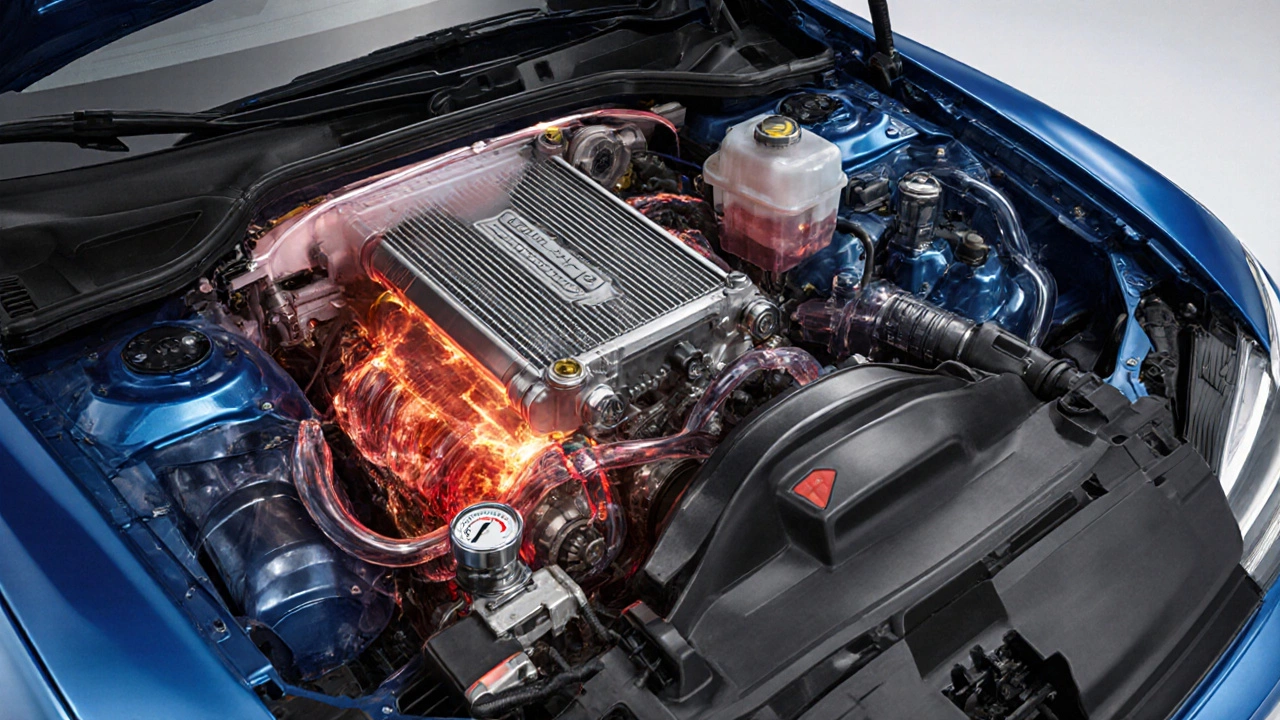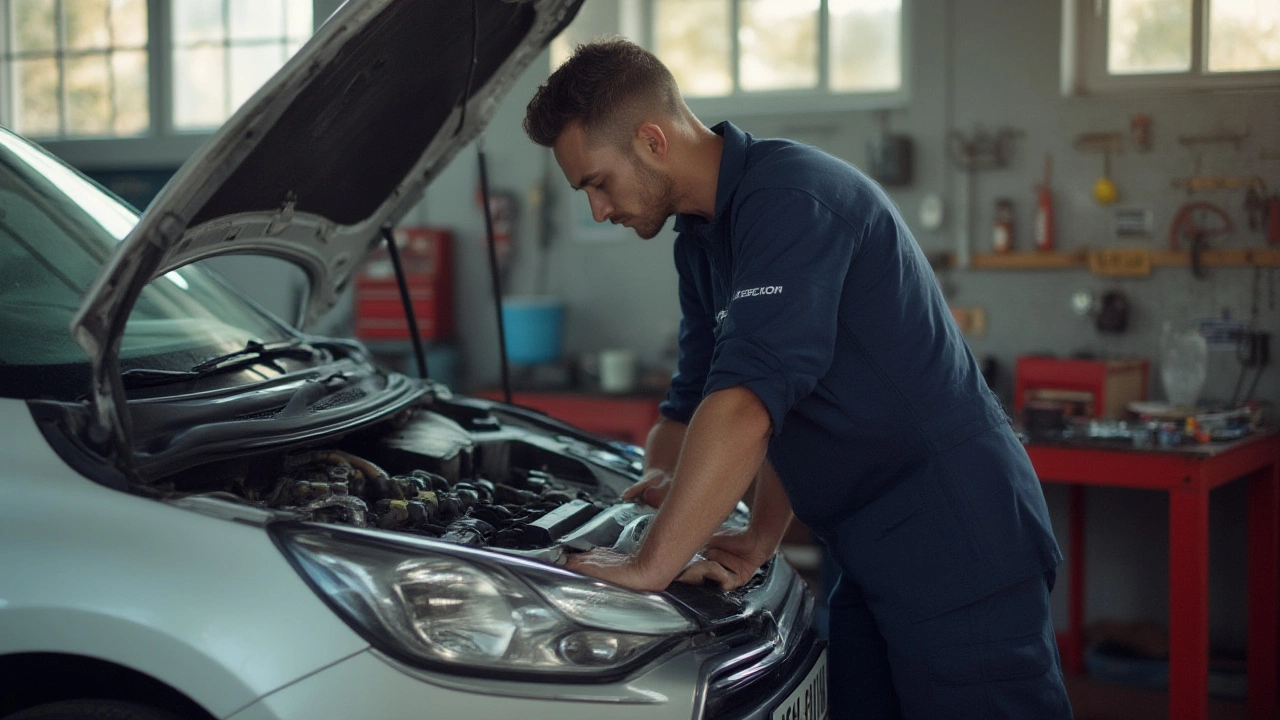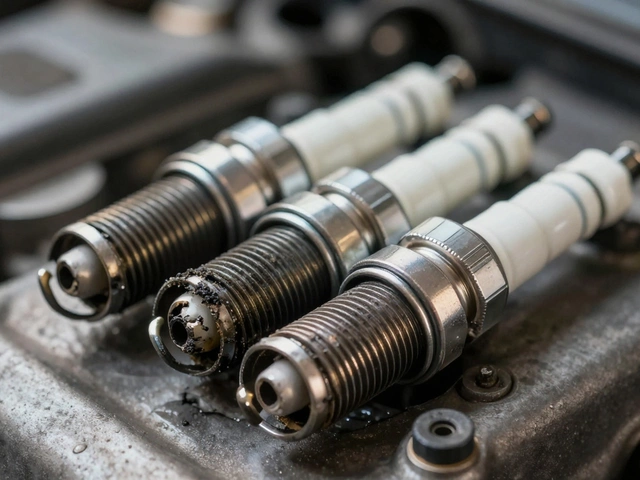Car Radiator Guide: How Long It Lasts and How to Keep It Healthy
Ever wondered why your engine gets hot or why the temperature gauge spikes? Chances are the radiator is the culprit. It’s the heart of the cooling system, pulling heat away from the engine and dumping it into the air. When it works right, you’re cruising without a sweat. When it fails, you’re stuck on the side of the road.
How Many Miles Do Car Radiators Last?
On average, a radiator will give you anywhere from 80,000 to 150,000 miles. The exact number depends on driving habits, climate, and how well you look after it. Hot summers, salty roads, and frequent short trips can shave years off its life. If you live in a coastal area or drive a lot in heavy traffic, expect the lower end of that range.
One of the biggest killers is rust. Even though radiators are made of aluminum or copper, the coolant can become acidic over time and eat away at the metal. When you notice green or brown sludge in the coolant, that’s a sign the radiator is fighting corrosion.
Simple Checks and Maintenance to Extend Life
First thing to do is keep an eye on the coolant level. A low level means the radiator is working harder and can overheat. Top it up with the right type of coolant for your car – usually a 50/50 mix of water and antifreeze. Don’t just dump plain water; it won’t protect against freezing or boiling.
Next, check the coolant’s condition. If it looks dirty, cloudy, or has a strange smell, it’s time for a flush. A proper flush removes rust particles and old chemicals that can clog the radiator’s tiny tubes. Most mechanics can do a flush in under an hour, and it’s a cheap way to avoid expensive repairs later.
Watch the radiator hoses for cracks, bulges, or leaks. A hose in bad shape can let coolant escape, causing the engine to overheat fast. Replacing a hose is simple and cheap – usually less than £30 for parts.
Listen for odd sounds. A whistling or bubbling noise while the engine runs can mean air is trapped in the cooling system. Bleeding the system removes the air and restores proper flow.
If the temperature gauge climbs steadily while you’re driving, pull over safely and let the engine cool down. Open the radiator cap only when the engine is cold; opening it hot can cause burns and release steam that damages the radiator.
When to Replace the Radiator
Even with the best care, radiators eventually wear out. Replace it if you see any of these signs:
- Persistent overheating despite fresh coolant.
- Visible leaks at the radiator core or tank.
- Coolant that spills onto the ground under the car.
- Rusted or corroded metal visible through the plastic tank.
Swapping a radiator isn’t a DIY job for most people because it involves draining the cooling system, removing the old unit, and fitting a new one with proper seals. In the UK, a typical replacement costs between £150 and £300 including labor, depending on the make and model.
Before you commit, ask the shop to check the thermostat, water pump, and fan. Sometimes the radiator looks bad, but the real problem is a stuck thermostat or a failing pump. Fixing those parts together can save you from a repeat visit.
To sum up, keep your radiator topped up, flush it every 2‑3 years, inspect hoses, and act fast on any overheating sign. Do these simple steps and you’ll likely hit the higher end of the mileage range, saving you time, money, and a lot of roadside hassle.
 8 October 2025
8 October 2025
Running a Car with a Bad Radiator: Risks, Signs & What to Do
Learn if a car can run with a bad radiator, spot the warning signs, take emergency steps, and know when to repair or replace the radiator for safe driving.
 8 July 2025
8 July 2025
Radiator Replacement Guide: When Should You Change Your Car Radiator?
Get the facts on how often to replace radiators. Learn the signs of a failing car radiator, tips to extend lifespan, and the real-life timelines for safe, worry-free driving.
 24 May 2025
24 May 2025
Car Radiators: What They Are and Why You Can’t Ignore Them
Car radiators keep engines cool and running right, but they’re easy to overlook until things go wrong. This article breaks down what a car radiator really is, how it works, and why it’s crucial. You’ll get clear tips on spotting radiator trouble before your engine overheats and what you can actually do about it. Learn how to grab a few extra years out of your radiator with simple care and see how these parts have changed over time. Whether you’re a gearhead or someone who really doesn’t want to be stranded, this guide is for you.
 2 May 2025
2 May 2025
How to Tell if Freon Is Low in AC Car: Easy Signs and Tips
Wondering why your car's AC isn't blowing cold air anymore? Low Freon could be the culprit, and it's more common than you'd think. This article breaks down the easy-to-spot signs your AC might be running low on refrigerant, why it happens, and what to do if you spot the problem early. You'll get hands-on tips, so you won't have to guess whether it’s time to check your system. Knowing these signs could save you time and money, and keep your summer drives comfortable.
 13 March 2025
13 March 2025
Is Replacing a Radiator a Tough Task?
Replacing a radiator might seem daunting, but understanding the process can make it manageable. This article explores the ins and outs of radiator replacement, including tools needed and common pitfalls. While it requires some automotive know-how, with guidance, it’s doable for DIY enthusiasts. Discover useful tips and interesting facts about radiators to make the job less intimidating.
 26 February 2025
26 February 2025
Make Your Car AC Cold Again: Simple Solutions to Beat the Heat
If your car AC isn’t as cold as it used to be, don't sweat it. This article dives into common reasons why your car's AC may not be performing well and offers practical fixes. We’ll explore everything from low refrigerants to radiator issues and help you tackle the problem yourself. Get back to enjoying those cool rides, even on the hottest days. Fixing your AC might be easier than you think.
 23 January 2025
23 January 2025
How Difficult is it to Replace a Car Radiator? A DIY Guide
Replacing a car radiator might seem like a daunting task, but it can be manageable with the right knowledge and tools. This article explores the complexity of radiator replacement, providing helpful tips to determine whether it's a job for you or a professional. Learn the signs of a failing radiator and understand the basic steps involved, ensuring your vehicle keeps its cool.
 11 December 2024
11 December 2024
Dealing with a Damaged Radiator: What You Need to Know Before Hitting the Road
Driving with a faulty radiator can lead to severe car damage and dangerous situations on the road. This article explains why radiators are vital for vehicle performance, the risks of driving with a compromised radiator, and early signs of radiator problems. Additionally, it offers tips on preventive maintenance and guidance on what to do if faced with radiator issues.
 12 November 2024
12 November 2024
How Much is a Car Radiator Replacement?
Replacing a car radiator can be essential for maintaining vehicle health, yet its cost varies widely based on factors like car model and local labor charges. This article delves into the financial aspects of radiator replacement, offering insights into parts costs, labor fees, and potential DIY approaches. It also explores signs of a failing radiator and when replacement is necessary. By understanding these elements, car owners can make informed decisions about their vehicle maintenance.
Latest Posts
-

Using Regular Oil Instead of Synthetic: Risks, Effects & What to Expect
-

How to Recognize Signs of Bad Front Suspension in Your Vehicle
-

How Long Do Silicone Wiper Blades Last? Real Lifespan Facts & Replacement Tips
-

Does Changing Spark Plugs Improve Your Car's Performance?
-

How Many Years Do Spark Plugs Last? Real-World Lifespan Explained

0